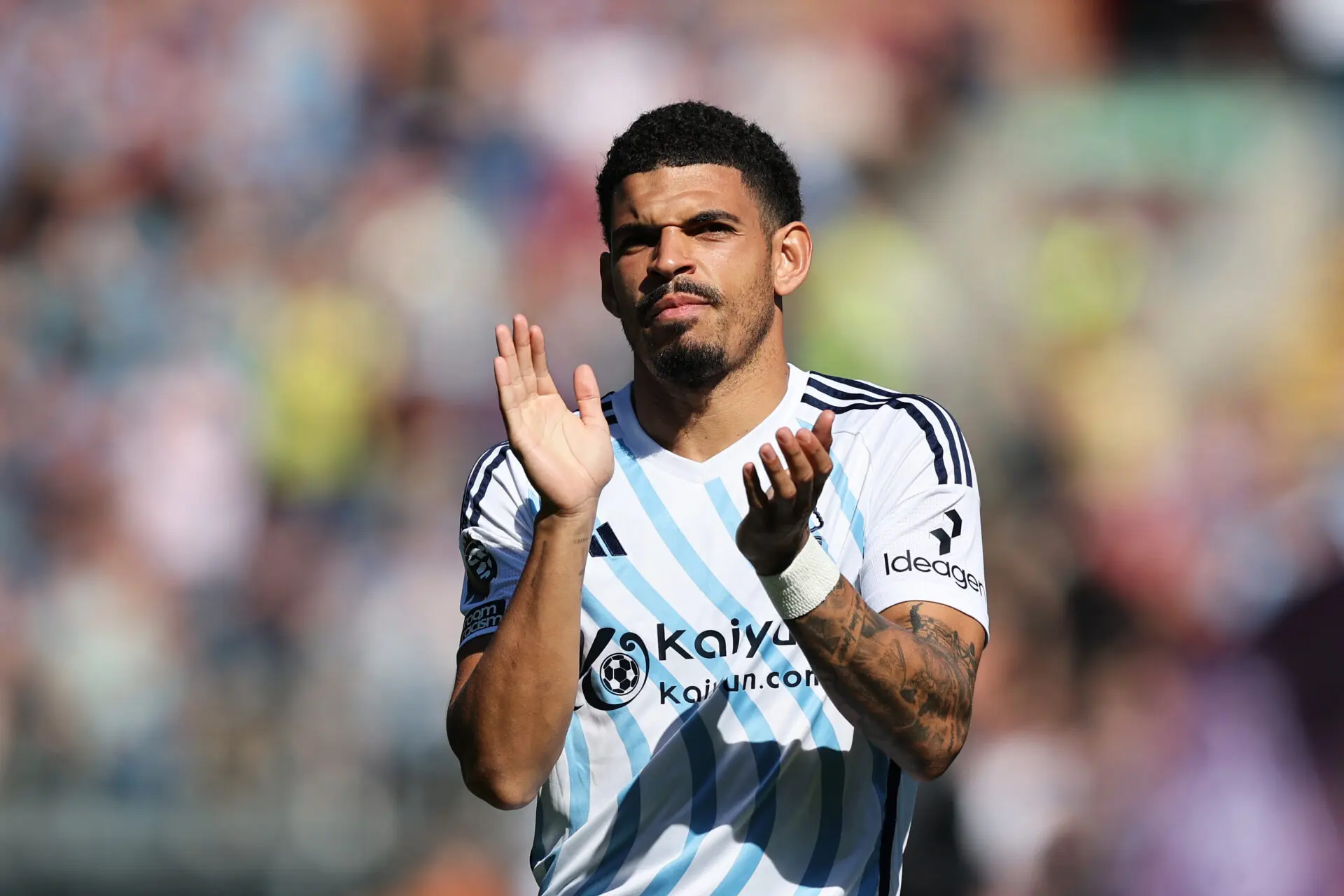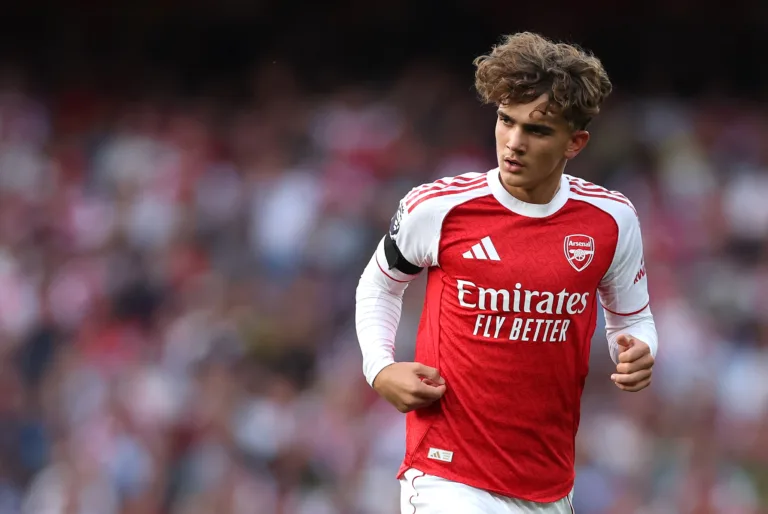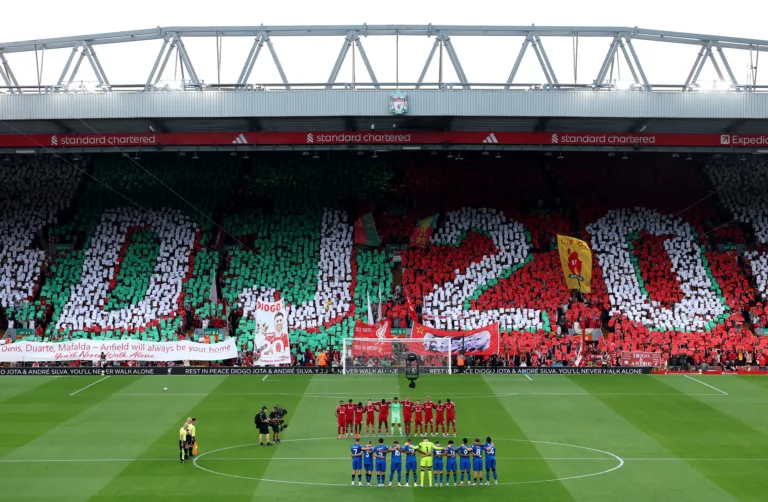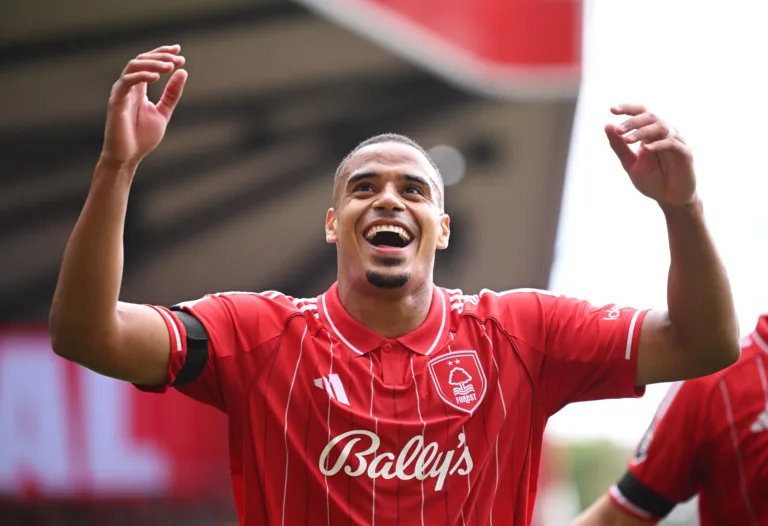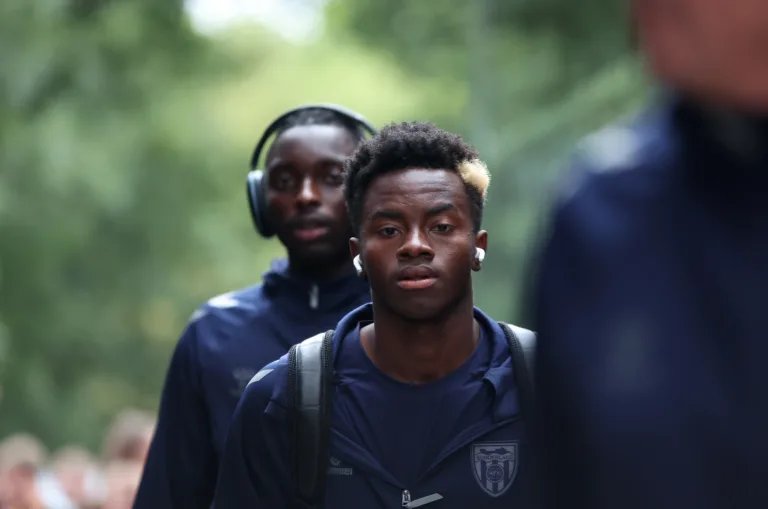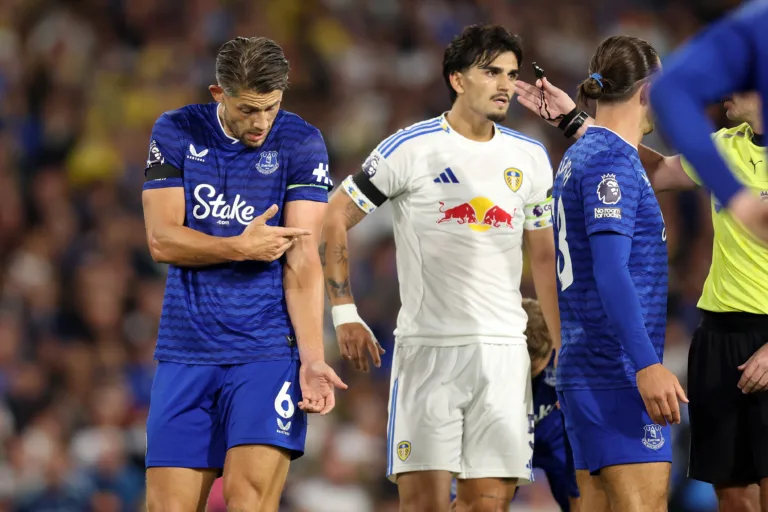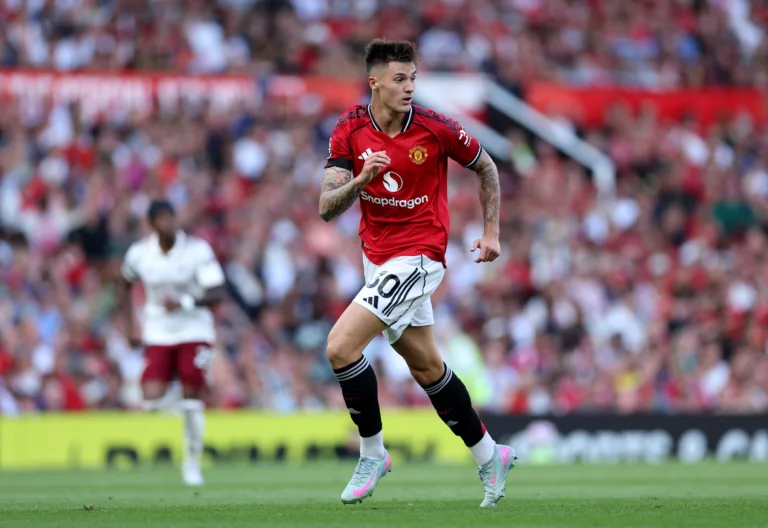From Underrated to Undeniable—Why Gibbs-White Could Be Tottenham’s Tactical Catalyst
Following the news that Tottenham is willing to trigger the £60 million release clause for Morgan Gibbs-White, this analysis will explain why this potential deal will not be just a headline but a turning point.
Behind the numbers, Tottenham, under Thomas Frank’s leadership, is undergoing a transformation, rebuilding their midfield with purpose rather than impulsiveness. In Gibbs-White, they haven’t just bought a player; they’ve acquired a system-solver, a tactical amplifier, and a midfielder wired for modern football’s dual demands of invention and intensity.
The acquisition isn’t a transfer made for nostalgia or name value; It’s a meticulously calculated addition to a project taking shape. Gibbs-White could become the core of a Tottenham team that Frank is shaping to be vertical, pressing, and possession-dominant. The numbers hint at his impact.
The context reveals his edge. And when viewed through the lens of system fit—next to Kulusevski, behind Kudus, ahead of Bentancur—his role looks less like rotation and more like reinvention.
What follows is a deep breakdown of why Gibbs-White could redefine Tottenham’s midfield identity, offering balance where flair alone has failed and tactical clarity in a system that demands more than just artistry.
The Numbers Behind the Player
| Metric (per 90) | Gibbs White | Maddison | Kulusevski |
| Matches | 38 | 45 | 50 |
| Minutes Played | 3139 | 2725 | 3449 |
| Goals (xG) | 7 (6.34) | 12 (7.82) | 10(5.11) |
| Assists (xA) | 4 (4.69) | 10 (7.94) | 11 (5.23) |
| Key Passes | 61 | 64 | 87 |
| Interceptions | 23 | 20 | 23 |
| Tackles | 47 | 40 | 64 |
| Clean Sheets | 3 | 0 | 7 |
| Accurate Passes | 1125 (80.9%) | 1461 (86.9%) | 877 (80.3%) |
| Yellow/Red Cards | 12 / 1 | 8 / 0 | 5/0 |
| Errors Leading to Goal | 0 | 0 | 0 |
| Shot-creating actions | 3.69 | 4.60 | 4.75 |
| Progressive passes | 5.27 | 7.94 | 4.48 |
| Progressive carries | 2.22 | 2.23 | 4.42 |
| Successful take-ons | 1.00 | 1.58 | 1.43 |
On raw production, Maddison and Kulusevski edge Gibbs-White. But context is everything.
Operating Environment: Nottingham Forest vs. Tottenham
Gibbs-White operated in a less possession-dominant Nottingham Forest side. Despite that, he was involved in 11 goals and contributed 61 key passes, as well as being a defensive contributor with 47 tackles and 23 interceptions. He worked in a more transitional, counter-attacking scheme under Nuno Espirito Santo, far removed from the high-possession systems of Tottenham.
His numbers take on extra weight. His ability to impact games without structural superiority marks him as system-resilient and adaptable.
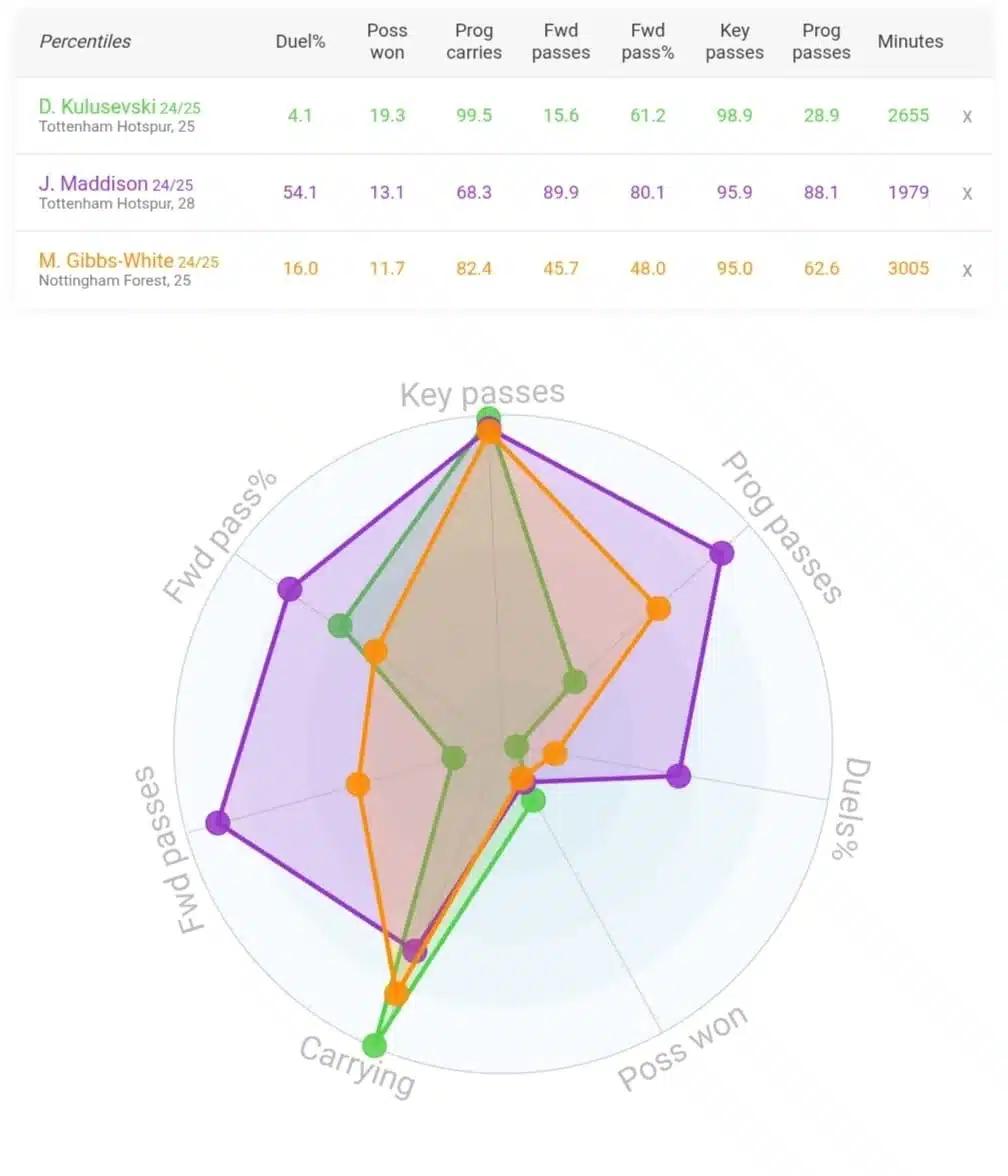
Why Gibbs-White Fits Thomas Frank’s Midfield Blueprint
Frank’s 4-2-3-1 at Brentford relied on verticality, progressive distribution, and high pressing. The No. 8 role in this system is central to transitions and territorial control; these are areas where Gibbs-White excels:
Progressive Passes: 5.27 per 90-high for a deeper-lying midfielder. This points to a more direct approach. He’s not just recycling possession but aiming to break lines regularly.
Progressive Carries: 82nd percentile among peers. He drives with the ball more, offering verticality in transition and during build-up.
Key Passes: 95th percentile, highlighting he isn’t just a ball carrier—he creates as well.
Carrying Ability: Matches or exceeds Maddison in many carrying metrics
Tackles and Interceptions: Shows he can press and recover. His defensive activity, especially interception numbers, points to strong tactical awareness and pressing intelligence, crucial for Frank’s high-line pressing system.
Notably, Gibbs-White averaged 47 tackles, higher than Maddison (40). His duel win rate is modest, but he makes up for it in anticipation and positioning, as reflected by his 23 interceptions.
In Frank’s Tottenham, where the midfield is tasked with both forward thrust and lateral coverage, Gibbs-White’s dynamism and awareness become critical assets.
Why He May Outperform Maddison as a No. 8
Maddison has been effective in higher areas but struggled when asked to play box-to-box. His numbers dip defensively, and his reliance on time and space often limits his impact under high press. Conversely, Gibbs-White excels in chaotic situations.
His passing map shows diversity. He attempts a blend of short progression and vertical slicing balls. While Maddison offers finesse and final-third quality, Gibbs-White contributes with:
- Balance across zones
- Off-the-ball movement
- Ball retention under pressure
Moreover, Gibbs-White is younger and has played more minutes than Maddison this season (3139 vs. 2725), showing both durability and trust from the coaching staff.
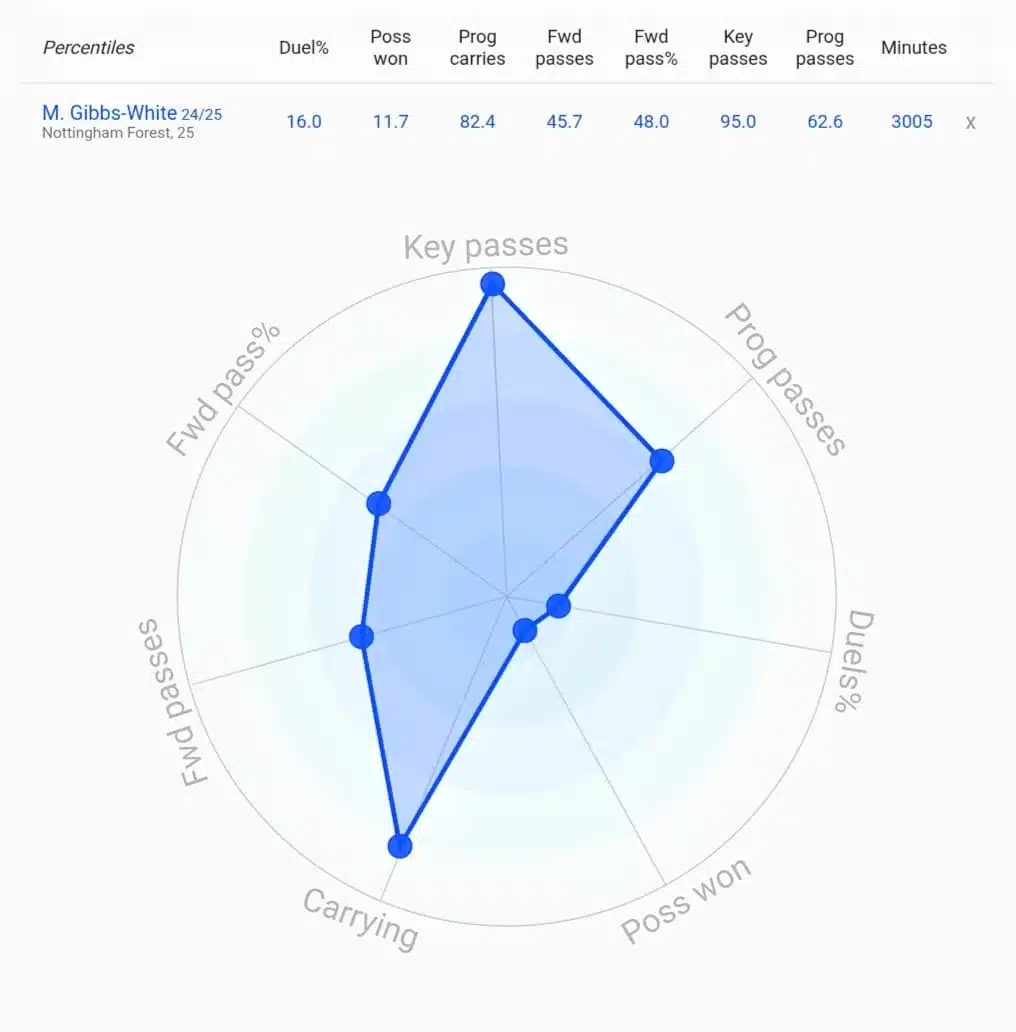
A Leader With Room To Grow
Having captained Nottingham Forest on several occasions, Gibbs-White offers more than technicality. The English midfielder brings presence and leadership. Tottenham has lacked a commanding midfield voice since Mousa Dembélé’s departure. Bentancur, Bissouma, and Højbjerg have rotated without claiming the role. Gibbs-White’s temperament, drive, leadership, and consistency could fill that vacuum.
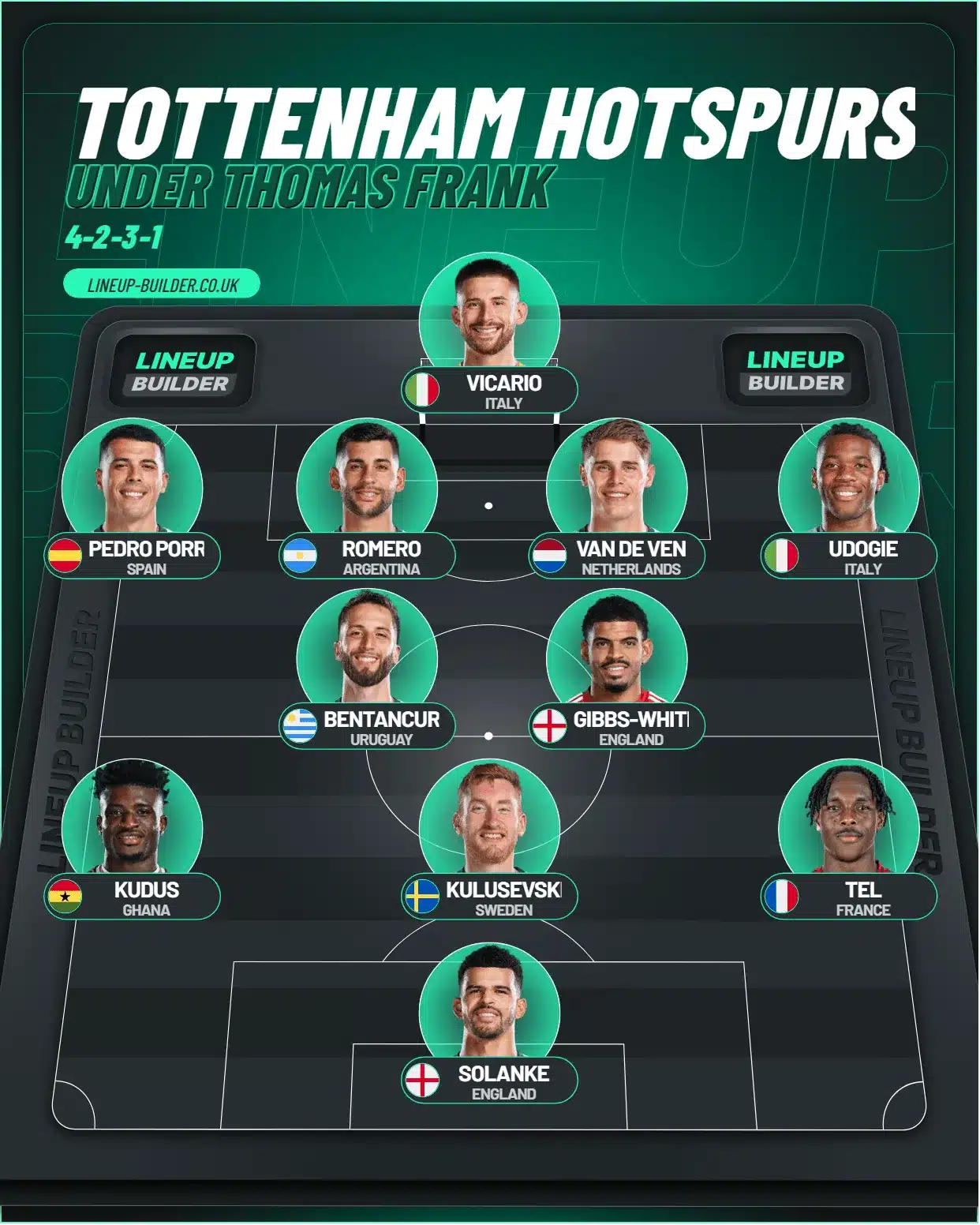
Tactical Synergy: Gibbs-White With Kulusevski and Kudus
Here’s where things become intriguing, as the Danish manager appears poised to deploy his Spurs team as follows:
- Kulusevski as No. 10
- Kudus as right winger
- Gibbs-White as No. 8
- A No. 6 (e.g., Bentancur or Bissouma) in the pivot
This configuration allows Gibbs-White to operate as the shuttling engine between lines. With Kudus pulling markers wide and Kulusevski receiving between the lines, Gibbs-White gains time on the ball and vertical lanes.
In this structure, his radar chart points shine:
- Carrying (82nd percentile) helps beat the first line
- Key passes (95th percentile) help break the second line
- Defensive effort ensures balance behind the ball
His 80.9% passing accuracy might seem modest, but it reflects high-risk, high-reward intent. That intent is necessary to puncture deep blocks—something Tottenham often struggles against.
The Final Third: What He Adds in Attack
Despite playing deeper, Gibbs-White’s 7 goals from 6.34 xG is a sharp return. His ball-striking is clean, and he often arrives late into the box, ghosting markers. His assists catalogue shows he’s not merely a carrier—he’s a creator.
His 3.69 shot-creating actions per 90 aren’t Maddison’s 4.60, but they are top-tier for a midfielder not always in the final third. With Kulusevski drifting wide and creating inside spaces, Gibbs-White can arrive late or occupy vacated zones for overloads. His chemistry with Kudus and Kulusevski could elevate Spurs’ spatial exploitation and second-phase attacks.
Risk and Reward
Yes, he received 12 yellow cards and a red in 2024/25. His intensity needs refinement. But that same aggression feeds his defensive contributions. Under Frank’s mentorship and with Champions League exposure, expect maturation.
His duel win rate and accurate pass percentage (80.9%) will be scrutinised. But in the context of the role he’s expected to play, these risks are tactical features—not bugs.
A Signing With Purpose
Tottenham’s £60 million move for Morgan Gibbs- White is not a gamble—it’s a calculated shift in tactical identity. In Thomas Frank’s evolving system, the acquisition isn’t about replacing James Maddison—it’s about redefining what the No. 8 should be in a Tottenham midfield built for thrust, control, and fluidity.
Gibbs-White arrives with more than numbers. He brings adaptability honed in adversity, creativity forged in chaos, and leadership shaped by responsibility. His metrics show progression, but his game shows a purpose that aligns with Frank’s vertical automatisms, pressing structure, and spatial manipulation.
With Kudus offering direct width, Kulusevski threading between lines, and a robust pivot anchoring transitions, Gibbs-White becomes the connective tissue linking phases, unsettling structure, and imposing tempo. He’s not the showpiece. He’s the synchroniser. The system doesn’t orbit around him, but it may very well click because of him.
And in an era where systems matter more than star power, that could prove more transformative than any marquee name. Tottenham haven’t just signed a player. They’ve secured tactical gear, one that may yet drive them into a new, more sophisticated, and successful future.


